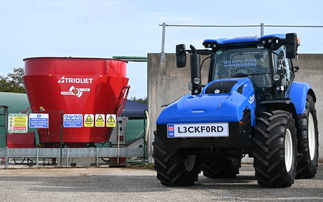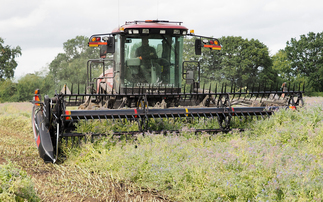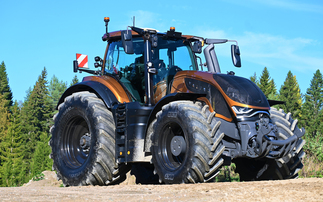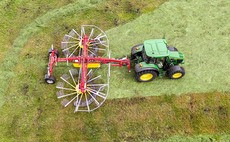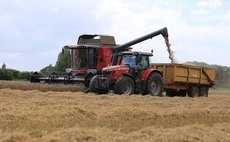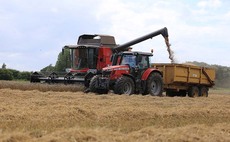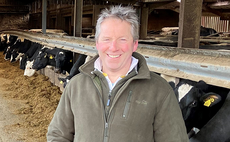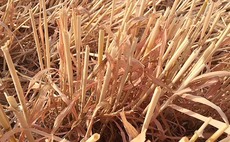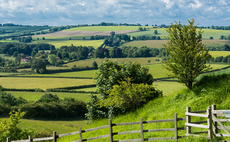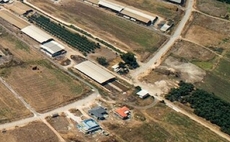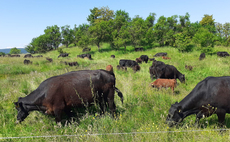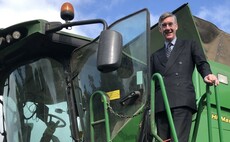As its name suggests, the Shelbourne Reynolds stripper header does exactly that - it strips grain from the plant, leaving the straw behind. And over 30 years since this innovation first appeared on the market, it has yet to make a serious impression on UK cereal growers.
By reducing the volume of crop entering the combine, throughput and productivity could soar. But the concept appeared to create more challenges than the solution it provided, as growers were left head-scratching when it came to dealing with the standing straw that was left behind.
Fast forward 30 years, and the advances in drill developments along with min-till and zero-till techniques, have eased the challenges of dealing with high volumes of trash and standing straw. And the Suffolk-based engineering firm reckons interest in its stripper header is once again on the rise.
For Fred Hilsdon of Harrowden Farms near Wellingborough, Northants, the Shelbourne stripper header provides a flexible harvesting option. It sits alongside a conventional header enabling both to be used on the farm's Case IH Axial Flow 8240.
"I liked the idea of taking just the grain, and thought it was an ideal solution for harvesting seed crops that could not be desiccated," explains Fred. "While it might seem a little excessive to have two headers, the cost of a conventional 10.6 metre (35ft) header and a 9.7m (32ft) stripper header was still less than the price of a MacDon draper for the 8240."
"Both headers have their advantages, depending on what we want to do with straw and subsequent cultivations," he adds. "The stripper header provides a cost-effective way of increasing combine output, while also reducing fuel consumption. And if we are not chopping straw, we do benefit from a fuel saving of around 40 per cent."
Bought for the 2021 harvest through local dealer Russells, the XCV32 stripper header has completed two seasons for the Hilsdon family, and is facing an increasing workload this year, as the farm makes the most of its output potential.
"We will probably cut half our acreage with it this year," explains Fred. "It has given us the ability to take the grains off long before the straw is ripe, which means harvesting can start around 10 days earlier than using the conventional header."
And he believes the earlier harvest could have contributed to header losses being no different to a conventional header.
"We have not yet had to harvest crops that are very ripe, which could make a difference with losses," he says.
The stripper header uses a rotor equipped with eight rows of key-hole-shaped steel stripping fingers. Like a grass pickup, the rotor pushes upwards against the crop enabling the fingers to strip the crop of its grains, with a series of deflectors making sure what is stripped is then collected by an auger and pushed to the combine's feeder house.
Shelbourne Reynolds says it is a process that sees around 85 per cent of the grain threshed by the header, reducing the volume of material going into the harvester.
According to Harrowden Farms' combine operator Dave Groome, the biggest benefit is that of combine output.
"Forward speed is up from 5kph to 12kph, with throughput boosted by around 60 per cent," explains Dave Groome. "My best day during last year's exceptional conditions was 165 acres with the stripper header, and 90 acres with the standard header."
Though he says that there are downsides.
"You cannot see what is being harvested," says Dave. "With the enclosed header on the ground, the top canopy produces a bow-wave of crop in front on it, which makes it difficult to gauge what is going on underneath. And there is no auto-levelling capability - it is a fairly basic design, which relies on speed to load the combine."
Mr Hilsdon says that having a combine on tracks does provide stability for the wider headers, and with trailers running on tramlines, compaction is managed.
"Controlled traffic does not suit our system, but managed wheelings with the help of good wheel and tyre combinations at correct pressures, does limit compaction," he says.
The 700ha Harrowden Farms grows winter wheat, spring oats, spring barley and spring beans on its mostly Banbury-series heavy clays. Mr Hilsdon says that wheat and beans are harvested with the conventional header, with straw being chopped and incorporated. The stripper header is currently used to harvest oats and spring barley.
Being FACTS and BASIS qualified, Fred Hilsdon carries out his own agronomy, and has seen several benefits from leaving the standing straw behind.
"We have seen a reduction in slug populations in crops following the stripper header, because there is no longer a mat of chaff and straw for them to flourish within," he says. "The standing straw also holds moisture because it is slowly dying off, but it also provides protection against winds that can easily bake our soils. A short stubble can see soil moisture disappear very quickly in a dry summer."
"We have also noticed an increase in English Partridge and Skylarks residing among the cover that has provided by stripped straw," he adds.
The farm makes the most of cover cropping, which is drilled using an 8m Horsch Sprinter with Dutch openers, into a seedbed that has been worked to a depth of 100-150mm using a TopDown equipped with Tilso Sabre tines, to incorporate straw and residues.
A John Deere 750A equipped with Pro Series openers is used for everything else, including drilling wheat direct into standing straw, and all spring crops following spraying of over-wintered cover crops.
He says the farm has seen an increase in tilth quality where straw has been left standing, to naturally weather.
"Soil between the rows of straw is almost a micro-climate," he says. "There is protection for the next crop, and by direct drilling, we are moving very little soil but placing seed into a friable tilth. We now drill earlier in the Autumn and later in Spring."
Making the most of stale seedbeds, with establishment backed up by a robust pre-emergence programme, the farm is keeping blackgrass incidence at a manageable level. Drilling is always executed at a slight angle to the previous crop, and 32m tramlines are kept in the same location year-on-year, picked up by the sprayer's GPS.
"We have a very flexible approach to harvest, cultivations and drilling," he says. "And there is even a five-furrow plough in the shed, which can be used on anything from 12-40 ha each year, depending on the soil type, soil condition and rotation."
"And next year, we will have a more powerful Case IH Axial Flow 9250 for the task, so the stripper should see service on three combines before we will need to replace it," adds Fred. "The XCV model appeals to a world market, where there is a healthy demand for used Shelbourne stripper headers, so its residual value should help ease our way into the next one."












